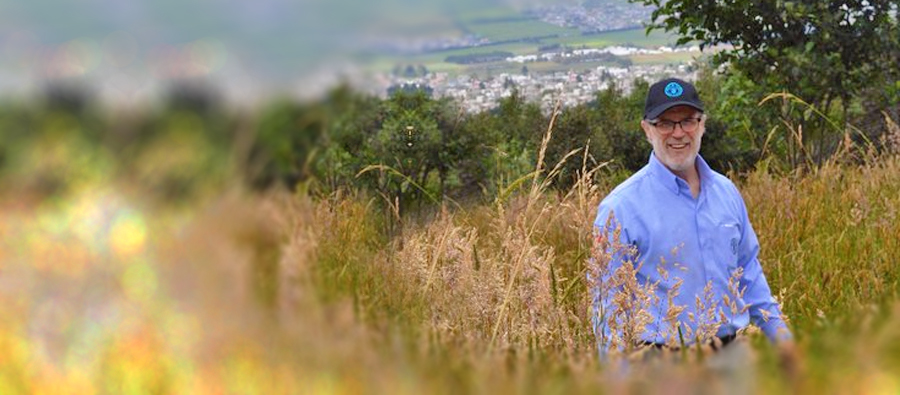A chat with FAO Investment Centre’s Deputy Director on cusp of retirement

FAO Investment Centre Deputy Director John Preissing reflects on his 15-year career at FAO as well his 25 additional work years, encouraging trends in agrifood investment and his plans for retirement.
When did you join FAO, and how has your job evolved?
I joined FAO in 2008 as a senior extension systems officer, working on large-scale extension systems reform projects as well as normative products, tools and studies. I became FAO Representative in 2012, first in Peru and then in Ecuador. And then in 2019, I joined the Investment Centre as Deputy Director. But I had already been partnering with the Centre right from the start on studies, investment project design, evaluations and tools.
How has FAO changed over the years?
We’ve had two big initiatives during my time at FAO under two Directors-General – the five Strategic Programmes and now the four betters (better production, better nutrition, a better environment and a better life for all). But in terms of operating styles, I’ve consistently seen a greater focus on accountability, transparency, efficiency, impact and ties with Member countries. As a former FAO Representative, I especially appreciate our Investment Centre’s laser focus on countries, helping them to achieve impact at scale.
As for new trends in agrifood investment, I think the idea that we are all part of a larger agrifood system is a great mental model. The push in recent years for more sustainability, inclusivity and greener agrifood systems is encouraging. The Centre is seeking out new partners and new areas of emphasis, like digital agriculture and green and blue finance, which I find exciting.
Name three achievements during your FAO career you are most proud of?
One was when I was the FAO Representative in Ecuador. FAO’s goal was to increase the number of countries under a treaty on undocumented, unregulated and illegal fishing to reduce overfishing and improve the livelihoods and quality of life of fisherfolks. The government in Ecuador was divided among many factions. Our role as FAO was to provide compelling evidenced-based information, expert testimonies and recommendations, working hand in hand with parliamentarians and the President of the Committee on Foreign Affairs. After eight months of discussions, it was approved by Parliament and signed by the Foreign Minister. We used all the tools in FAO’s arsenal to help bring about an important policy change.
Another is what I consider the most important technical body of work I contributed to, which is a suite of agricultural investment projects on agricultural innovation systems with the Investment Centre. The goal was to foster new innovations and research that could be taken up by smallholders and small and medium enterprises along the value chain. I come from the perspective that farmers taking up innovations is a great way to improve incomes, productivity and sustainability. But what are the barriers to uptake? How do we come up with innovations that are tailored to farmers’ actual needs, and not just ones coming out of a research lab or a policy-maker’s head? It was a unique approach. I helped design, implement and evaluate projects across the Latin America and Caribbean region. Each was around USD 100 to 250 million. When you add them up, it’s a significant impact.
Finally, I’m proud of my support for the Investment Centre’s new Transformation Plan and ‘4+2 solutions’. When I arrived four years ago, I never guessed we would have the chance to develop such a bold vision and expanding mission. This transformation feels more ambitious and more concrete every day.
What advice would you give to people just starting out in FAO?
I would advise people to take up their jobs with gusto for the technical and normative roles they can play and the support they can provide to countries to make agrifood systems more sustainable, inclusive and resilient.
I would encourage people to work in the field. If you have the opportunity, take up an outposted position. I had such an enjoyable time working for FAO in Ecuador and Peru. The work felt more immediate. I would also encourage people to ‘sharpen their saw’, so to speak – to acquire new skills, both hard and soft, and to be self-actualized.
What’s next for you?
I’m a big believer in FAO’s four betters – the four Bs. In retirement, my own four Bs will be more biking, more books, more barbequing and I’m working on the fourth. We’ve lived outside of our home country for the last 15 years and are really looking forward to spending time with family and friends in the Chicago area. I’m still interested in contributing to FAO’s mission, as needed. I feel extremely lucky to have been part of such a great team in the Centre. When I was 23 and working in a rural village as a farmer trainer and extensionist in Ecuador, I remember telling my wife Peggy ‘I want to do this for the rest of my life’. And that’s basically what I’ve done. So, I feel very fortunate.
